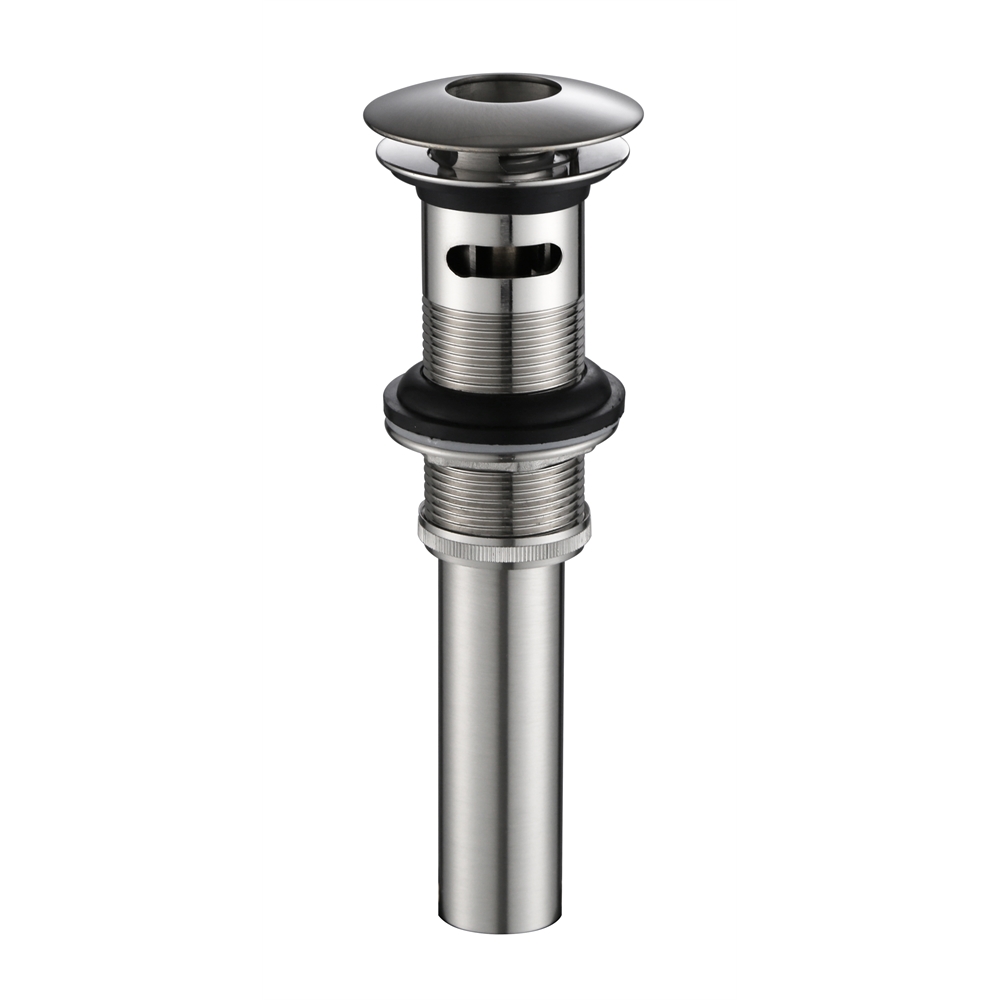

Lastly, a closet drain auger is specifically designed to drain snake-out toilets. This machine effectively clears almost all stubborn clogs, even those caused by tree roots tangled in the drain. You’ll have to rent an electric auger for severe clogs or those far from a fixture. Notably, augers come up to 100 feet long, but you probably won’t need a model more than 25 feet long to tackle a household clog. An auger is a flexible device with a long steel cable wound around a spool fitted using a crank. AugerĪ plumber’s snake or cable auger will be beneficial if you need to break obstructions lodged deep down the shower drain pipes. This long stick with a suction cup attached at one end can help clear clogs from various plumbing fixtures, including toilets, tubs, and sinks. After that, we’ll discuss unclogging each type of drain. Let’s look at the tools you’ll need to unclog such drains effectively.
#Sink overflow drain clogged how to#
How to Unclog Any Drain: Sink, Toilet, and Tub We’ve tried to simplify things for you by curating this guide on unclogging any drain in a toilet, tub, or sink. Each clog requires a different method of clearing, and you can use various tools for this purpose. So, it would help if you learned how to deal with clogs in standard plumbing fixtures before it gets out of hand. Find suggestions for tackling these plumbing issues in the next section.Although you never want to deal with slow-running sinks and toilets at home, you can’t prevent such situations altogether.Īfter all, a clog doesn’t come with a warning bell. Unclogging floor drains and main drainpipes is another job altogether. If this doesn't work, remove overflow plate and insert auger directly into overflow pipe and down into drainpipe. Step 6: If bathtub drain is clogged and plunger doesn't clear it, use drain-and-trap auger first through tub drain opening. You should be able to reach blockage, unless it's in section of main drain. If clog wasn't in trap, insert drain-and-trap auger into drain extension that goes into wall and continue working auger down into drainpipe itself. (The section How to Replace a Drain Trap provides complete instructions on how to remove and replace a drain trap.) With trap removed, clean it out with wire coat hanger and then with stiff brush and hot soapy water replace trap. Step 5: If trap does not have clean out, remove trap. Work wire toward basin and drainpipe to remove blockage. If this fails, insert wire of drain-and-trap auger through clean out. You can use wire coat hanger with hook shape in one end to try to reach clog. Step 4: If auger doesn't clear drain, remove clean-out plug from under sink, catching water from trap in bucket. If you can't remove the obstruction there, move onto the overflow and then the drum trap. Then continue to turn handle while slowly withdrawing auger.Ī clog near the tub's drain can be attacked from several places - the overflow opening (as shown), the tub drain opening, or the drum trap.

If wire encounters something, move it back and forth while you turn auger handle. As you feed flexible wire in, crank handle of device, loosening and then tightening thumbscrew on handle as you advance wire. To use it, remove popup stopper or strainer from clogged drain and insert auger wire into opening. For drain that's completely blocked, however, it's best not to use chemicals, as they contain caustic agents that can actually harm some fixtures. Step 3: If plunger doesn't remove clog, consider using chemical drain opener. If the clog is not in the fixture's trap, insert a drain-and-trap auger into the drain extension that goes into the wall, and work the auger into the drainpipe.

If it doesn't, try same procedure two or three more times before attempting another method. After about a dozen firm strikes, jerk plunger up quickly. It is this back-and-forth water pressure that can eventually build up enough force to dislodge whatever is blocking drain. You should feel water move in and out of drain. Slide plunger's cup over drain opening, then rapidly pump plunger up and down. Coat lip of plunger with petroleum jelly (this helps create better seal). Step 2: Fill clogged basin with enough water to cover head of plunger.


 0 kommentar(er)
0 kommentar(er)
